black market dispensary
Finding Weed in Mexico City
Published
2 years agoon
By
admin
Mexico City is currently building its reputation as a hub for travelers and expats alike. Whether its to see beautiful sights, enjoy the spicy cuisine, or escape America (I say that broadly as people ‘escape’ from all parts), it currently stands as a desired destination. And what of the marijuana situation? Mexico is in a strange legal limbo when it comes to weed at the moment; however despite this, its now possible to buy weed from dispensaries in Mexico City. Just beware, it’s expensive.
A little about Mexico City
Mexico City, often referred to CDMX (Ciudad de Mexico), is the capital city of Mexico. It is both Mexico’s largest city, and the largest city of North America, beating out New York City. In reality, the cities are close in population; each have in the neighborhood of 9 million in their respective city proper areas (CDMX slightly over, NYC slightly under), and massive metropolitan areas. NYC beats out CDMX for larger metropolitan area, though they both top 20 million. CDMX covers more land overall, while NYC is more densely populated. On the streets, they often look pretty similar.
Mexico City has the distinguishing factor of being one of the highest cities in terms of altitude. The city sits at 2,240 meters (7,350 ft) above sea level; meaning if you have asthma or other breathing problems, you’re likely to feel it more here, than in other, lower-down places. I have yet to see a runner on the streets.
It’s a huge city and cultural center, filled with all kinds of history and natural beauty. It also has a lot of crime, and in the past was considered rather dangerous. In reality, many parts still are, but much of the city underwent major cleaning-up. Particularly the areas most known to the tourist populations, like Condessa, Roma, Centro, and Polanco, among others. Huge swaths of the city are filled with trendy bars, high-end cuisine, and rather pricey hotels and housing. It’s one of the most expensive parts of Mexico, much like other tourist areas including Cancun, Puerto Vallarta, or San Miguel de Allende.

It also has a well-developed subway and metrobus system for transportation, which includes cable cars; cops nearly everywhere, but not in an aggressive way (at least in the areas I frequent); a lot of parks and green spaces; and a ton of air pollution. It’s a place to find all kinds of music from metal to salsa to jazz, hear different languages spoken, and to immerse oneself in culture. If you like history, you’ve got castles and palaces (right in the city); pyramids and Aztec ruins in Teotihuacan; and a variety of historical monuments and museums, in the historical center, and beyond. While much of Mexico has that 3rd world feel, Mexico City does not in many parts.
Finding weed in Mexico City
When you’re planning to spend some time in a place, it’s important to be able to find the things you need. In this case, while I don’t necessarily need weed in Mexico City, I certainly wanted it. I came to the city with a small amount, and a plan to stay for possibly a few months. I needed a local connection. My first thought was of the menus I came across in Guadalajara. A bit pricey, but also geared toward the tourism market. As of yet, I have not come across one.
I figured it would take no time to find some info if I went to a few Meetup events; but to my surprise, weed didn’t come up at the first. I even forgot to ask, as there wasn’t a hint of smoke in the air. Finally I singled out a couple of American guys at a party and asked if they smoked weed. One didn’t use at all, the other said he bought gummies from a store in the Polanco area. I was intrigued. I asked if they sold flower there as well. He said he didn’t think so. I checked out the Polanco High Club online, and found it was just a head shop, though they do advertise gummies and other THC edibles.
I haven’t checked yet to see if those locations also sell flower; I’ll check it out later. My new friend didn’t think so. Instead, I decided to see what happened if I put ‘dispensary’ into Google Maps. And voila, several options came up. More than one featured pictures on Google Maps of stores with flower for sale. And just my luck, the one that looked the best, was within 15 minutes from where I was staying in Roma Norte. I decided to check it out.
The dispensary doesn’t advertise online, they have no official site. Instead they have an Instagram account, and a listing on Google Maps. Mexico, it should be remembered, is in the middle of a huge mess. Since 2018 recreational weed has been legal via Supreme Court ruling; but the government has continually failed to establish rules to regulate an industry. So is it legal to run a dispensary that sells weed? Hard to say; not exactly, but not exactly not. There is certainly no established sales market, and a lot of gray area.
Here’s my experience
This might sound weird, but I’m not going to print the establishment’s name. I appreciate the service, and in this tenuous environment, don’t want to ruin anything for anyone. However, I attached a link to their Instagram, and if you put ‘dispensary’ into Maps, you’ll find an entry on Colima Avenue, number 220, in Roma Norte. That’s the spot.
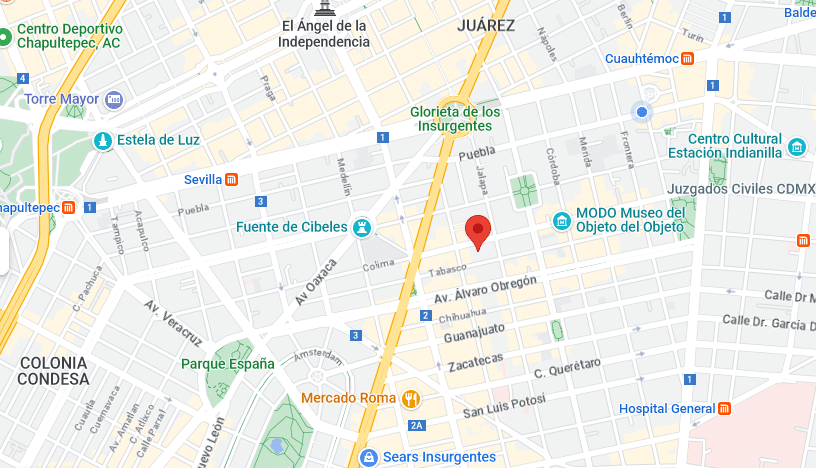
I walked to the area, and when I got there, I realized it wasn’t an obvious storefront. I didn’t see a sign anywhere, but found the correct address. As there was new information on Maps, I knew the place wasn’t closed, and the lack of official signage makes sense. I went back to Maps and found there was a picture posted of the entrance; which looks like the entrance to an apartment building, complete with doorman.
After looking back and forth from my phone to the entrance a few times, I finally went in and asked the doorman if the store was in the building. He immediately confirmed I was in the right place. He asked for my name, first and last; but did not ask for an ID. He just said my name into a phone at his side, and then told me to go to the 5th floor and turn right. I took the elevator up.
Once off, it indeed looked like apartments or small offices. Perhaps none of it was residential, it was hard to tell. I turned right and found myself in front of an open door, and what looked like a low-key salon. I quickly glanced around to see if there was anything weed-like, but there was not. A worker saw me and said I was probably looking for the place next door. Indeed the next door down was closed and locked; with a buzzer, and a badly drawn picture of a weed nugget.
I rang the buzzer, and was buzzed in. I entered a room that smelled like herb with apparel on the far end. I walked around a wall to get to the counter. Three guys stood at the counter speaking English. In the counter were different edible products, and paraphernalia. Behind the counter, on the wall, were big glass canisters full of flower. The American guy who served me, said it was his dispensary. He said he’d ran it for seven months already. I asked if he had any issues, and he said no knocks on the door yet. He said he had deals worked out, I didn’t ask anything further. I confirmed that I found the place through Google Maps.
I asked him if he had any good indicas, and he indicated two different options in the high end realm. He was going to go on about lower priced options, but I told him it wasn’t necessary; I wanted something good. The two options both smelled delicious; one Purple Flavonoid, and one Bubba Kush. I bought a gram of each, which were put in smell proof bags, emblazoned with print information unrelated to the store. That was it. I had a brief conversation with the guys about living in Mexico, said my ‘thank you’s, and went out the same way I came in.
A little on pricing
I expect several of the dispensaries that come up on Google Maps have a similar setup. I’ll check out more in the future. It’s nice to know that a good product can be found, without finding a dealer, and without a functional market in the country. It definitely wasn’t cheap, though! Not by either American or Mexican standards. Although having said that, I don’t discount that those operating such establishments shoulder all the danger; both from law enforcement, as well as other entities.
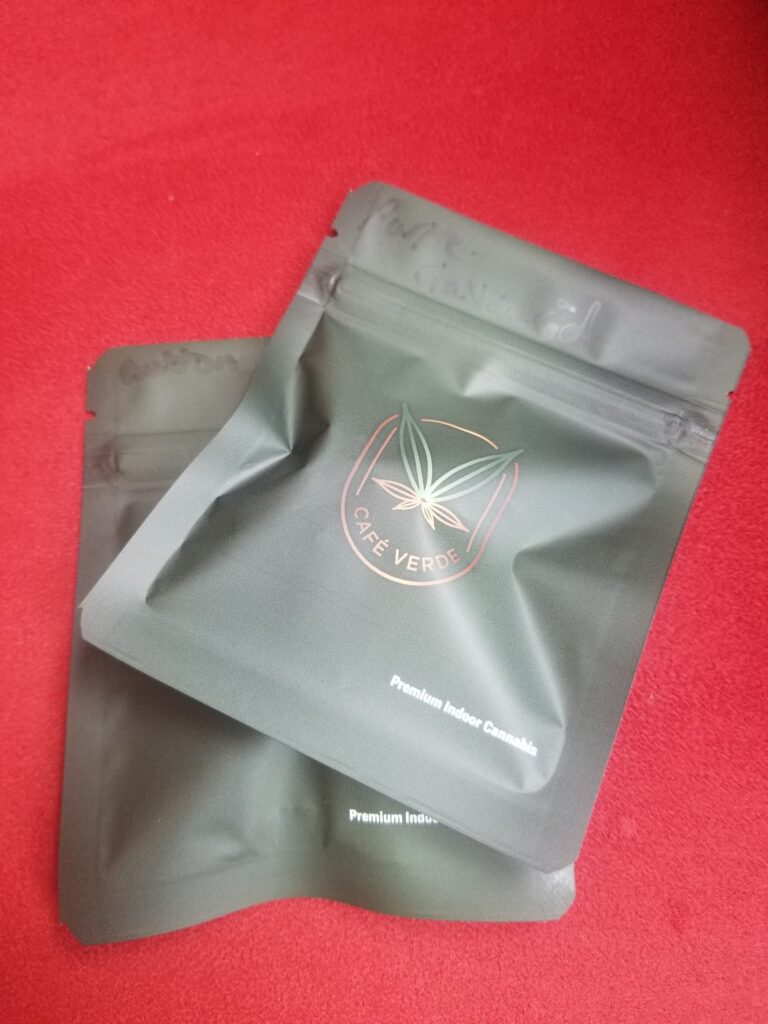
I paid 400 pesos per gram. That’s approximately $23 a gram in the US. When was the last time you paid $23 for a gram in America? These days, you can sometimes buy an 8th for that amount. There are few dispensaries that charge that much for a gram, unless it’s stuff so good, that the likes of Snoop Dog might buy it. Usually a gram is $10-15 dollars. In some states, less than $3, what with all the overproduction and competition issues. And this doesn’t account for independent dealers. Overall, this Mexico City dispensary charged far higher prices for weed, than in America.
But we’re not in America, we’re in Mexico. And the reality here is that most people smoke cheaper outdoor grown stuff. And when I say cheap, I really mean it. When I first got to the country in 2020, I bought my first ounce for 400 pesos. At that time, the dollar was stronger against the peso, and this equaled about $21-22. As an ounce is 28 grams, that means each gram went for about 14 pesos, or less than $1. It’s mostly sativa in Mexico, and most of the weed is low grade and has a lot of seeds.
From there I found a guy selling higher quality, but still outdoor grown, sativa. The price went up to 1,000 pesos per ounce, which now is about $58. That means almost 36 pesos per gram in Mexico, and a little over $2, in America. From there I found connections, first for imported American weed, and then for indoor grown in Mexico (the holy grail); and the price – and options – increased. I began paying as much as 3,500 pesos for an ounce of really nice indica. That means 125 pesos per gram, which is a little over $7. Now in American price territory, but for the highest grade stuff.
In comparison to that, 400 pesos per gram of weed in Mexico City is wildly expensive, and literally the same as what I paid for an ounce of the cheap stuff in Guadalajara. I’m sure if I hook up with a regular dealer, I can drop the price back down to standard prices. On the other hand, the dispensary provided me an easy way to get flower in a pinch, without knowing anyone; and included plenty of options, and friendly and knowledgeable personnel.
It will be interesting to see where the price point goes, when rules are established for this industry. Or at the very least, as more of these open, to bring in more competition. The reality, is that the prices are too high, and they will drop. For now, you can most certainly buy weed in Mexico City without a dealer. You just have to know how to do it, and be willing to pay a high price. For those happy enough with gummies, vapes, and other edibles; these are easier to find in regular head shops. Although much like in US black market dispensaries, it’s impossible to say what’s in them.
Conclusion
Finding a dispensary with high end weed in Mexico City, really improved my day. If you’re in Mexico City and on a similar mission for weed, or just curious what’s around; go ahead and check out that address on Google Maps. It’s pricey, but definitely worth it for a tourist in a tight spot, who isn’t buying big quantities, or doesn’t mind paying exorbitant prices. I fully admit though, I’d much prefer to find a better deal for the future.
Hello all! Welcome to Cannadelics.com; an independent news publication within the cannabis and hallucinogen spaces, here to bring you the best reporting for today. Head our way frequently to keep up-to-date; and sign up to the Cannadelics Weekly Newsletter, so you’re never late to get the news.
Related
You may like
black market dispensary
The Growth of the Black Market by the Existence of the Legal Market
Published
2 years agoon
April 17, 2023By
admin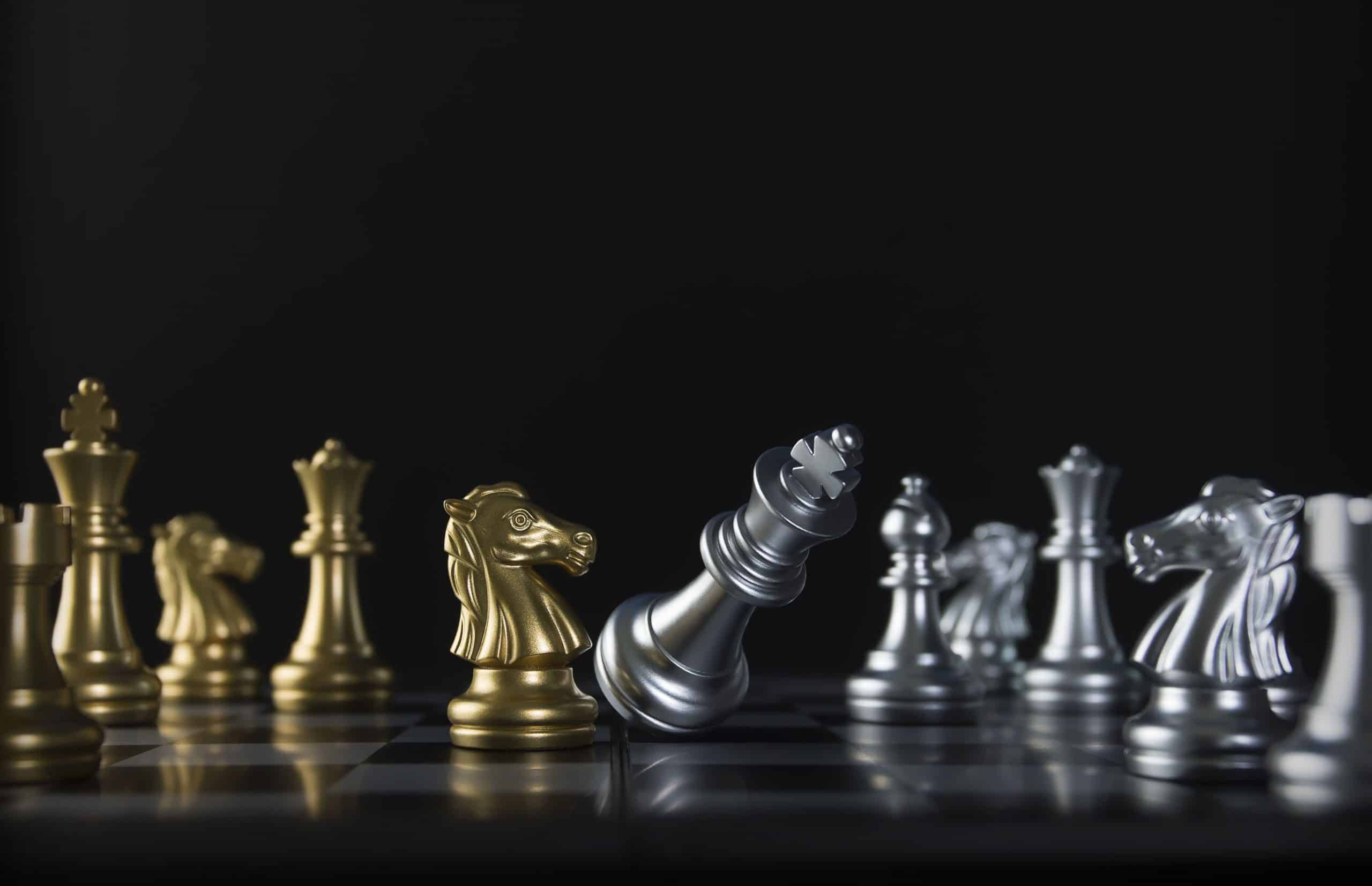
The cannabis black market was always there, and always big. But it has seemed to surge in recent years; offering way more options than it did before. How did this happen amid legal markets opening? Maybe simply, because they did. It seems the growth of the black market is due to the legal market.
What the black market used to be
For people coming of age today, the idea of shady black-market sales with dealers, is a less common thing. Not even because these covert sales don’t exist, but because nothing feels quite as covert anymore, when there are laws saying the contraband is actually legal. I mean, sure, it’s technically illegal when bought in that covert way, but unless the product a person has can be directly tied to an illicit sale, it’s no different than the legally bought product.
Back in the day, it really was an issue though. Deals were made behind closed doors, or in back alleys. People carefully traded money for product in ways that made it hard to tell what was going on. Dealers went by funny names like ‘Dank’ or ‘Scaggs’, and their clientele rarely knew them outside of the deal. And it was just standard flower, in the few options an individual dealer had. Apart from law enforcement and government harassment, we were all cool with this process, and the product sold.
Back in the day, which is everything back to a few years ago, no one thought about gummies in connection to weed. No one thought about super hard-core extracts. It was more about the quality of the plant material; which ranged from ditch weed that looked like stuff picked off the street, to crystal-covered, brightly colored, strong-smelling buds. A few people here and there baked up brownies, but this was usually an individual project, and edibles weren’t generally a part of black-market sales.
Hey everyone. Head to the Cannadelics Weekly Newsletter for all updates; and we’ll give you access to a bunch of offers on sweet products like cannabis flowers, vapes and smoking paraphernalia, edibles, cannabinoids, amanita mushroom products, and a huge range more. Feeling good is great, come do it!
What the black market is today
The idea that the growth of the black market is due to the emergence of legal markets, isn’t hard to understand. Today, the two look almost identical, to the point that many people have no idea they’re buying from the black market at all. And that’s because if a legal market emerges, any black market will copy what’s popular, and often with lower prices due to no tax or regulatory burden.
Beyond the still-standard back-alley sales (which often happen more conspicuously), both markets today use dispensaries to sell goods. Which means, all the products that came out of the legal market that expanded options, are also seen in the black-market dispensaries. This includes the range of edible products that go well beyond baked goods, to include gummies and other candy, chips, drinks, tablets, and so on.
Today’s cannabis black market is hiding in plain sight, keeping up with all the advancements of the legal industry. And while operators in the legal industry are subject to strict, costly, and often difficult-to-meet regulatory measures; along with seemingly ridiculous and greedy tax structures; the black market is not. And that means the ability to buy these same (or same-looking) products, but at lower prices. This ability for lower pricing has led to growth of the black market, which is essentially all owed to the existence of the over-priced legal market.
Where the black market and legal market differ
That they often look the same on the outside, doesn’t mean they are the same. Or that they sell the same products. Sometimes this is the case, but not always. Owing to that lack of regulation, illegal dispensaries and operations can offer different products. Some which are great for consumers, and some which pose problems.
That issue of people ingesting too much THC of late? Sure, simply having something easy to pop like gummies is a factor, but it goes beyond that. Illegal dispensaries don’t have to adhere to regulation limits on THC in products. I’ve seen edibles marketed as having 40mg, 50mg, or even 100mg of THC per dose. Though anyone can go crazy and pop a full pack of legal gummies; if buying super intense products, the chance of overdoing it on THC is that much more likely. One of the things that sets the markets apart, is this ability for the black market to sell super, super high THC products.
Another thing is the use of synthetics. With literally no regulation, the black market doesn’t have to sell what it’s saying it’s selling; something that’s relevant both to edibles, as well as vape carts. While I don’t have much faith in the legal industry anymore, partly due to issues of shoddy vape carts, I definitely don’t believe that the majority of carts sold in illegal dispensaries, are what they’re said to be. Of course, having said that, the last time I bought legal carts, even the ones that should have tasted like weed, instead had the taste of fake flavoring that permeates the carts of illegal dispensaries.
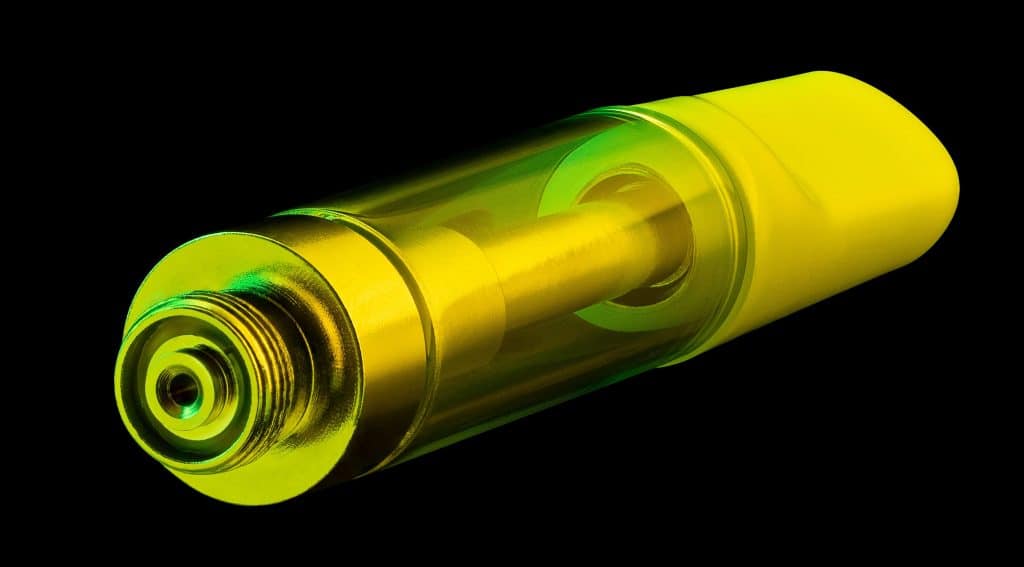
When something isn’t regulated, it creates a general free-for-all. And that ability to offer more products than its legal counterpart, and at lower prices, has likely helped the growth of the black market. Which then went several steps further.
How to know if you’re buying from the black market?
Obviously, if you have your own personal dealer who isn’t a licensed retailer, it’s black market. That’s the idea most of us think of when we hear ‘black market.’ But if illegal black-market dispensaries exist, how can a person know if they’re buying from a black-market retailer or a legal one? There are a few ways to make an informed guess.
- If the dispensary doesn’t check your ID upon arrival, it’s likely a suspect place. This is a legal requirement for all legal dispensaries, so a location that doesn’t adhere to this, isn’t going by enforced regulation. It’s a great way to get an idea about the legality of the location you’re in.
- If the dispensary sells products with THC above legal limits, it’s an illegal dispensary. All that stuff I said above about super high THC products; well they don’t exist in legal dispensaries, because they’re not legal products. If you see gummies that boast 40mg of THC per gummy, you can be sure you’re in an illegal dispensary.
- If the dispensary sells products that almost appear to be a well-known product, but with the insertion of THC; the place is an illegal dispensary. Trademark law protects companies that have legal and trademarked products, from having the likeness or taglines stolen by another company to sell a different product. So if it looks like Skittles, has a name that’s almost the same, with virtually the same packaging, but with the inclusion of THC; you’re not in a legal place.
These are just a few guidelines for establishing if where you’re buying from is technically legal. I’d be remiss, however, if I said it really matters. These dispensaries are still plenty good at providing basic products like flower, so if that’s what you’re about, you don’t have to care. You don’t even have to care if you like the edibles or carts from a place, so long as you feel like the product doesn’t negatively affect you. In fact, the reality that it’s so hard to know the difference between establishments, indicates that you’re probably fine either way.
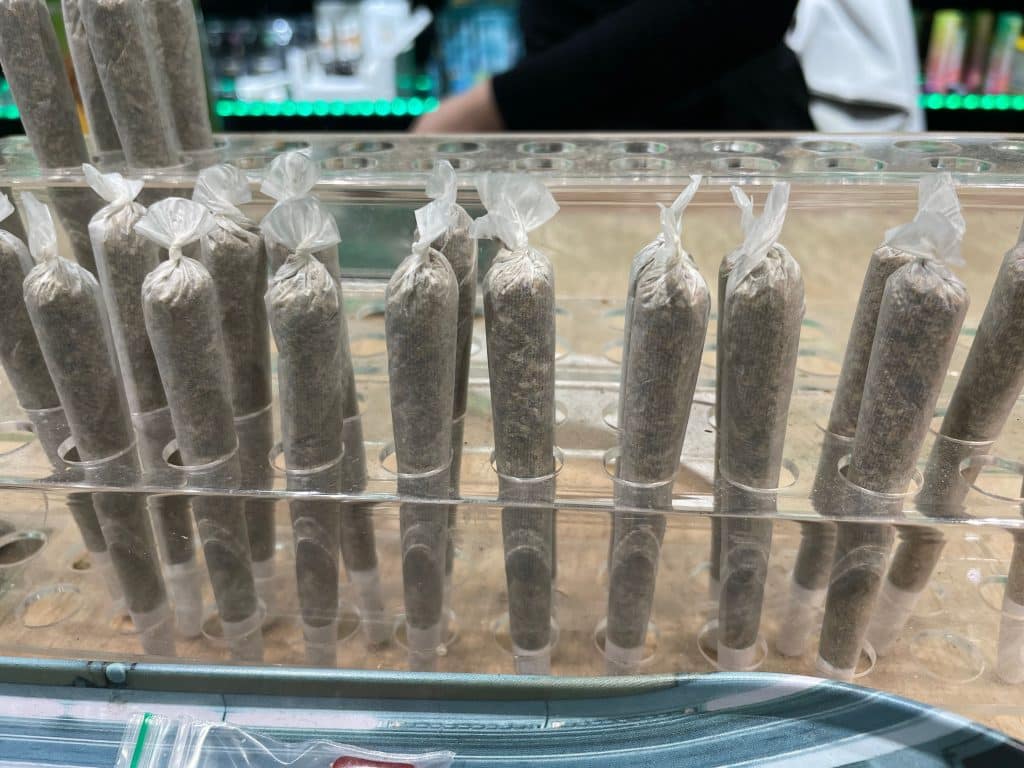
Is the black market bigger than the legal market?
It’s always impossible to say for sure, and black-market sizes vary by location. As black markets don’t report sales or earnings, an exact comparison is difficult to know. I can say this though, in a place like Vegas, it’s much easier to come across a black-market dispensary than a legal one, and illegal dispensaries enjoy prime locations like in the middle of the Strip.
What we keep seeing, is that dispensaries are having issues. Instituting monthly slotting fees, closing down, reporting low sales (often seen as reports of low tax revenue by governments.) So, does this strictly involve only legal dispensaries? Likely not, but it could be more of an issue for the legal ones because of higher pricing, or less-desired lower-THC items.
But then there’s another reality. If dispensaries aren’t doing as well, and people are still using weed; they’re either growing it themselves, or going back to their back-alley dealer. And that guy is now way more likely to have the same products found in a dispensary. Meaning, if the trend is to not use dispensaries as much, the black market still wins.
If the black market hadn’t copied the legal market, this might not be true. Since people like the new-age products; offering them is key to getting business. Which, again, points to the idea that the growth of the black market, is really based on the existence of the legal one. If it was just the guy doing back-alley deals, only offering flower, the legal market might have won.
Conclusion
For all the complaints of the black market still existing, the funniest aspect is that it is what it is today, solely because of the entrance of legal markets, and all the new options therein. This article does nothing to offer ideas for how to change this, I’m just putting it out there that if the black market has experienced growth since this began, it’s because of legal markets coming into being.
Welcome one and all. Thanks for dropping by Cannadelics.com; an independent news publication focused on reporting for the cannabis and hallucinogen spaces. Hang out with us daily to keep up with everything going on; and subscribe to the Cannadelics Weekly Newsletter, to ensure you’re always first to get the news.
Related

Buddha Chief raises vibrations at new Housing Works dispensary in NoMad

3 best THCA vape carts of 2025 by Leafly

From client to co-founder, Storz & Bickel executive on US tour to drum up cannabis business

UNDERSTANDING CANNABIS AND CANNABINOIDS (THC and CBD)

High Stakes and High Demand: Will Las Vegas Finally Allow Cannabis Near Casinos?

Cannabis Tourism in 2025: Destinations, Trends, and Tips

The Rise of Cannabis in Florida

Woody Harrelson Wishes He Could Invite Bob Marley To His Marijuana Dispensary—But Fears The Reggae Legend Would Out-Smoke Him

America is Rethinking Marijuana Legalization

Karma Koala Podcast 234: Tom Church Litigator, Atlanta. Georgia is notorious on the law enforcement front….. “Our Firm Gets Charges Dismissed in Delta-8-THC Prosecution”

Distressed Cannabis Business Takeaways – Canna Law Blog™

United States: Alex Malyshev And Melinda Fellner Discuss The Intersection Of Tax And Cannabis In New Video Series – Part VI: Licensing (Video)

What you Need to Know

Drug Testing for Marijuana – The Joint Blog

NCIA Write About Their Equity Scholarship Program

It has been a wild news week – here’s how CBD and weed can help you relax

Cannabis, alcohol firm SNDL loses CA$372.4 million in 2022

A new April 20 cannabis contest includes a $40,000 purse

Your Go-To Source for Cannabis Logos and Designs

UArizona launches online cannabis compliance online course
Trending
-

 Cannabis News2 years ago
Cannabis News2 years agoDistressed Cannabis Business Takeaways – Canna Law Blog™
-

 One-Hit Wonders2 years ago
One-Hit Wonders2 years agoUnited States: Alex Malyshev And Melinda Fellner Discuss The Intersection Of Tax And Cannabis In New Video Series – Part VI: Licensing (Video)
-

 Cannabis 1012 years ago
Cannabis 1012 years agoWhat you Need to Know
-

 drug testing1 year ago
drug testing1 year agoDrug Testing for Marijuana – The Joint Blog
-

 Education2 years ago
Education2 years agoNCIA Write About Their Equity Scholarship Program
-

 Cannabis2 years ago
Cannabis2 years agoIt has been a wild news week – here’s how CBD and weed can help you relax
-

 Marijuana Business Daily2 years ago
Marijuana Business Daily2 years agoCannabis, alcohol firm SNDL loses CA$372.4 million in 2022
-

 California2 years ago
California2 years agoA new April 20 cannabis contest includes a $40,000 purse



